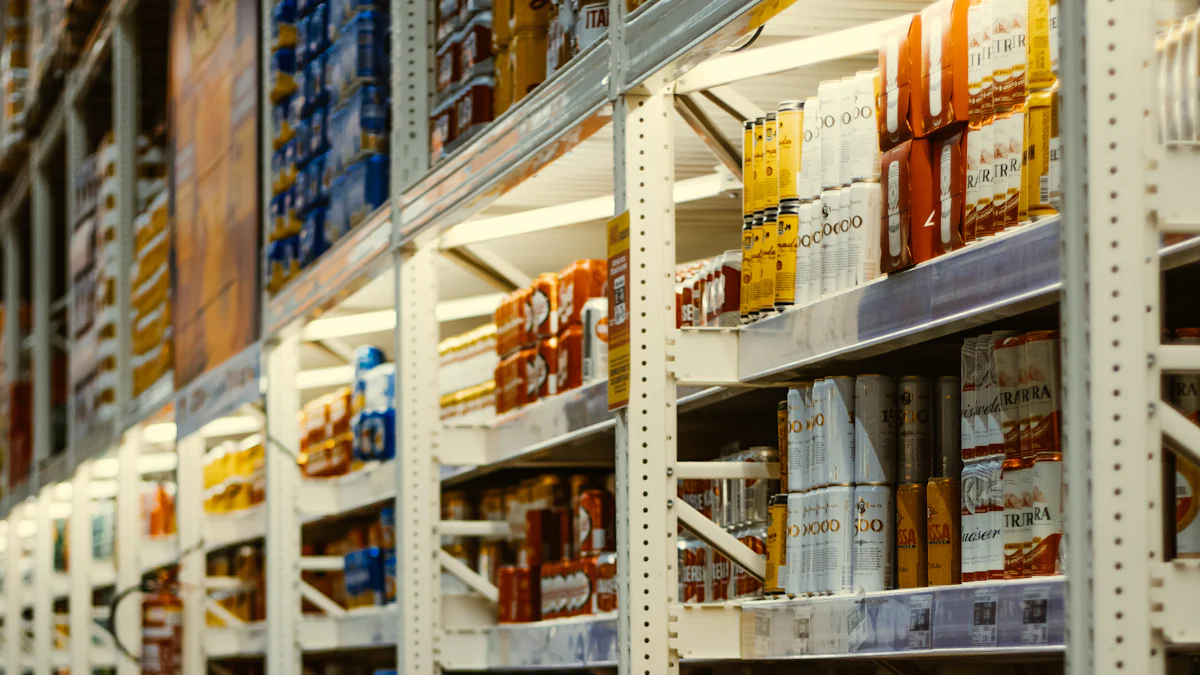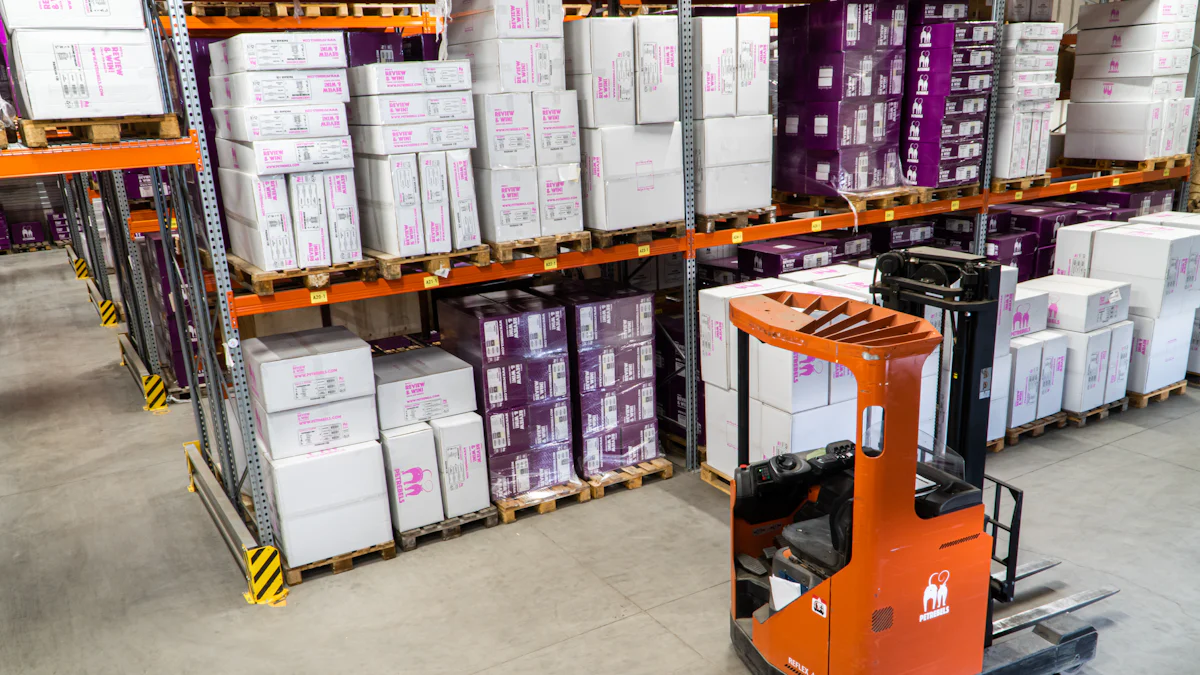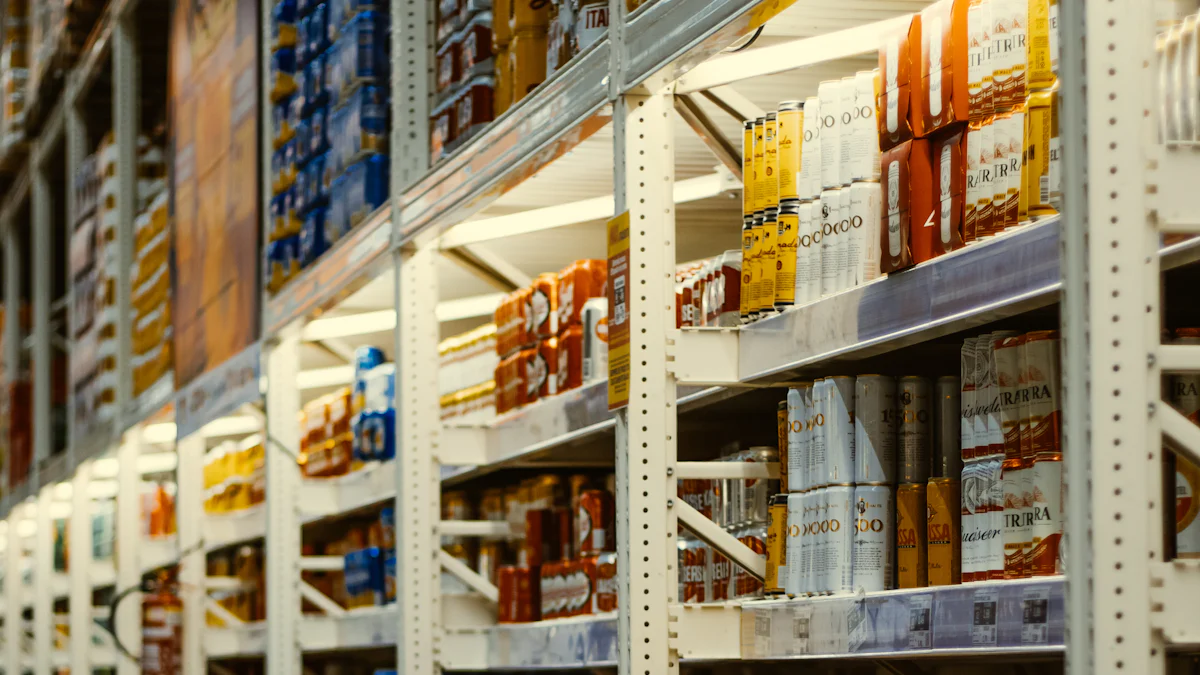Optimizing Overseas Warehouses for Cross-Border E-Commerce Success

Overseas warehouses play a vital role in cross-border e-commerce. These facilities enhance logistics efficiency and reduce delivery times. The global market for cross-border e-commerce is expanding rapidly, with significant growth projected from 2021 to 2030. JUSDA excels in optimizing these warehouses. JUSDA's innovative solutions ensure seamless operations and improved customer satisfaction. Businesses leveraging overseas warehouses can meet consumer demands more effectively. This strategic approach supports faster shipping and better inventory management.
The Role of Overseas Warehouses in Cross-Border E-Commerce

Localized Fulfillment
Overseas warehouses provide localized fulfillment for e-commerce businesses. Companies can store products closer to customers. This proximity reduces delivery times significantly. Customers receive orders faster, enhancing satisfaction. Businesses meet local market demands more effectively. Stock availability aligns with regional preferences and trends. Companies gain a competitive edge by adapting quickly.
Reducing Delivery Times
Warehouse optimization focuses on reducing delivery times. Efficient processes streamline order fulfillment. Products move swiftly from storage to shipment. Companies achieve significant gains in efficiency and throughput. Faster deliveries improve customer experience. Businesses stay competitive in the fast-paced e-commerce market.
Meeting Local Market Demands
Meeting local market demands requires strategic planning. Overseas warehouses enable businesses to adapt inventory based on regional needs. Companies analyze consumer behavior and adjust stock levels accordingly. This approach ensures product availability aligns with local preferences. Businesses unlock benefits by staying competitive and providing excellent service.
Inventory Management
Effective inventory management is crucial for e-commerce success. Overseas warehouses play a vital role in optimizing stock levels. Companies maintain optimal inventory to prevent overstocking or stockouts. This balance reduces costs and maximizes efficiency.
Stock Level Optimization
Stock level optimization involves precise inventory control. Businesses use data-driven strategies to manage stock efficiently. Real-time insights help adjust inventory based on demand fluctuations. Companies reduce unnecessary costs and improve resource utilization. Optimized stock levels ensure products are available when needed.
Demand Forecasting
Demand forecasting enhances inventory management. Companies predict future demand using historical data and market analysis. Accurate forecasts guide inventory decisions. Businesses align stock levels with anticipated customer needs. This proactive approach minimizes wastage and maximizes sales opportunities.
Enhancing Customer Experience
Enhancing customer experience is a priority for e-commerce businesses. Overseas warehouses contribute to faster shipping options. Customers receive orders promptly, leading to higher satisfaction. Improved logistics processes enhance overall service quality.
Faster Shipping Options
Faster shipping options result from efficient warehouse operations. Companies streamline processes to expedite order fulfillment. Customers enjoy quick deliveries, boosting loyalty and trust. Businesses gain a competitive advantage by offering superior service.
Improved Return Processes
Improved return processes enhance customer satisfaction. Overseas warehouses facilitate timely processing of returns and exchanges. Customers appreciate hassle-free return experiences. Efficient handling of returns strengthens brand reputation. Businesses build trust and encourage repeat purchases.
Strategies for Optimizing Overseas Warehouses
Unified Management Systems
Unified management systems enhance the efficiency of overseas warehouses. These systems provide centralized control over operations. Businesses can oversee inventory, shipping, and logistics from a single platform. This approach simplifies decision-making and reduces errors. Centralized control ensures consistency across all processes.
Centralized Control
Centralized control in overseas warehouses streamlines operations. Managers can monitor activities in real-time. This oversight helps identify issues quickly. Quick identification leads to swift resolution, minimizing disruptions. Centralized systems also facilitate better communication among teams.
Real-Time Data Access
Real-time data access is crucial for optimizing overseas warehouses. Access to up-to-date information allows for informed decision-making. Managers can track inventory levels and order status instantly. This capability enhances responsiveness to market changes. Real-time data supports efficient resource allocation and planning.
Advanced Warehouse Planning
Advanced warehouse planning improves the functionality of overseas warehouses. Efficient space utilization maximizes storage capacity. Proper planning ensures smooth workflows. Businesses achieve higher productivity with optimized layouts. Effective planning reduces operational costs.
Space Utilization
Space utilization is key to optimizing overseas warehouses. Strategic layout design maximizes available space. Proper organization facilitates easy access to products. Efficient use of space reduces handling time. Businesses benefit from increased storage capacity and reduced costs.
Workflow Efficiency
Workflow efficiency enhances the performance of overseas warehouses. Streamlined processes minimize delays in order fulfillment. Efficient workflows reduce labor costs and improve productivity. Businesses achieve faster order processing and delivery. Enhanced efficiency leads to higher customer satisfaction.
Strategic Partnerships
Strategic partnerships strengthen the capabilities of overseas warehouses. Collaborations with local providers enhance service offerings. These partnerships expand the reach of businesses. Leveraging global networks increases operational flexibility. Strategic alliances ensure reliable and timely deliveries.
Collaborations with Local Providers
Collaborations with local providers boost the effectiveness of overseas warehouses. Local partners offer insights into regional markets. These collaborations improve service quality and customer experience. Local expertise helps businesses adapt to market demands. Partnerships with local providers ensure seamless operations.
Leveraging Global Networks
Leveraging global networks enhances the reach of overseas warehouses. Global partnerships provide access to diverse resources. These networks support efficient logistics and distribution. Businesses benefit from expanded market presence and improved service. Global networks ensure consistent and reliable operations.
Technology Integration
Technology integration transforms overseas warehouses into efficient hubs. Automation and robotics streamline operations. Machines handle repetitive tasks with precision. This reduces human error and increases productivity. Automated systems sort, pack, and ship products quickly. Businesses benefit from reduced labor costs and faster order processing.
Automation and Robotics
Automation in overseas warehouses enhances efficiency. Robots perform tasks like picking and packing. This speeds up the fulfillment process. Automated guided vehicles transport goods within the warehouse. This reduces the time taken for manual handling. Businesses achieve higher throughput and accuracy.
Robotics improves safety in overseas warehouses. Machines handle heavy lifting and hazardous tasks. This minimizes workplace injuries. Employees focus on more complex tasks. The overall work environment becomes safer and more productive.
IoT and Smart Warehousing
The Internet of Things (IoT) revolutionizes overseas warehouses. IoT devices provide real-time data on inventory levels. Sensors track the movement of goods. This ensures accurate stock management. Managers make informed decisions based on current data. This leads to better resource allocation and fewer delays.
Smart warehousing uses IoT for predictive maintenance. Sensors monitor equipment health. This prevents unexpected breakdowns. Maintenance teams address issues before they escalate. This reduces downtime and maintains smooth operations.
IoT enhances security in overseas warehouses. Surveillance cameras and sensors detect unauthorized access. Real-time alerts notify security personnel. This protects valuable inventory from theft or damage. Businesses maintain a secure and reliable supply chain.
Case Examples of Successful Optimization

JUSDA's Cross-Border New Retail Supply Chains
Key Strategies Implemented
JUSDA implemented several key strategies to optimize cross-border new retail supply chains. The company focused on integrating advanced technologies like big data and IoT. These technologies improved inventory accuracy and location tracking. JUSDA also utilized automation to enhance warehouse operations. Conveyor systems and barcode scanners reduced human error and increased speed. The company invested in warehouse management systems for better order tracking.
Tim Garcia, CEO of Apptricity, highlights common warehouse challenges. He mentions inventory accuracy and space utilization as critical issues. JUSDA addressed these by optimizing warehouse layouts. The company ensured efficient space utilization and minimized redundant processes. Picking optimization was another focus area. JUSDA streamlined picking processes to enhance efficiency.
Results Achieved
JUSDA achieved significant results through these strategies. The company reduced delivery times and improved customer satisfaction. Inventory management became more efficient with real-time data access. JUSDA's warehouses experienced higher throughput and productivity. The integration of technology led to cost savings and resource optimization. Customers benefited from faster shipping and reliable service.
JUSDA's E-Commerce Distribution Solutions
Key Strategies Implemented
JUSDA implemented strategic partnerships to enhance e-commerce distribution solutions. Collaborations with local providers expanded service offerings. These partnerships provided insights into regional markets. JUSDA leveraged global networks for efficient logistics and distribution. The company used automation and robotics to streamline operations. Automated systems handled tasks like sorting and packing.
JUSDA focused on workflow efficiency and space utilization. The company designed strategic layouts to maximize storage capacity. Efficient workflows reduced labor costs and improved productivity. JUSDA's approach ensured seamless operations and timely deliveries.
Results Achieved
JUSDA's e-commerce distribution solutions delivered impressive results. The company processed a vast number of orders daily. Customers enjoyed quick deliveries and hassle-free return experiences. JUSDA's warehouses maintained high levels of accuracy and reliability. The integration of technology enhanced security and compliance. Businesses gained a competitive edge with superior service quality.

SMART JUSLINK
Supply Chain Management Solution
Optimizing overseas warehouses offers numerous benefits for your e-commerce business. You can achieve faster delivery times and improved customer satisfaction. JUSDA's innovative logistics solutions enhance operational efficiency. Businesses leveraging JUSDA's platform experience significant cost reductions. Effective inventory management and strategic partnerships ensure seamless operations. Technology integration provides accurate data for informed decision-making. You can secure a competitive edge in the global market. Optimizing overseas warehouses enhances efficiency, reduces costs, and ensures security. Your business can thrive in the fast-paced world of cross-border e-commerce.
See Also
Revealing Innovative Approaches to Cross-Border E-commerce Supplier Partnerships
Maximizing Cost Efficiency in the Supply Chain Economics
Addressing Globalization's Impact on Supply Chain Expansion Hurdles
Unveiling the Benefits of Robotic Automation for Warehouse Efficiency
Enhancing Warehouse Productivity with the Strength of Logistics Robotics
